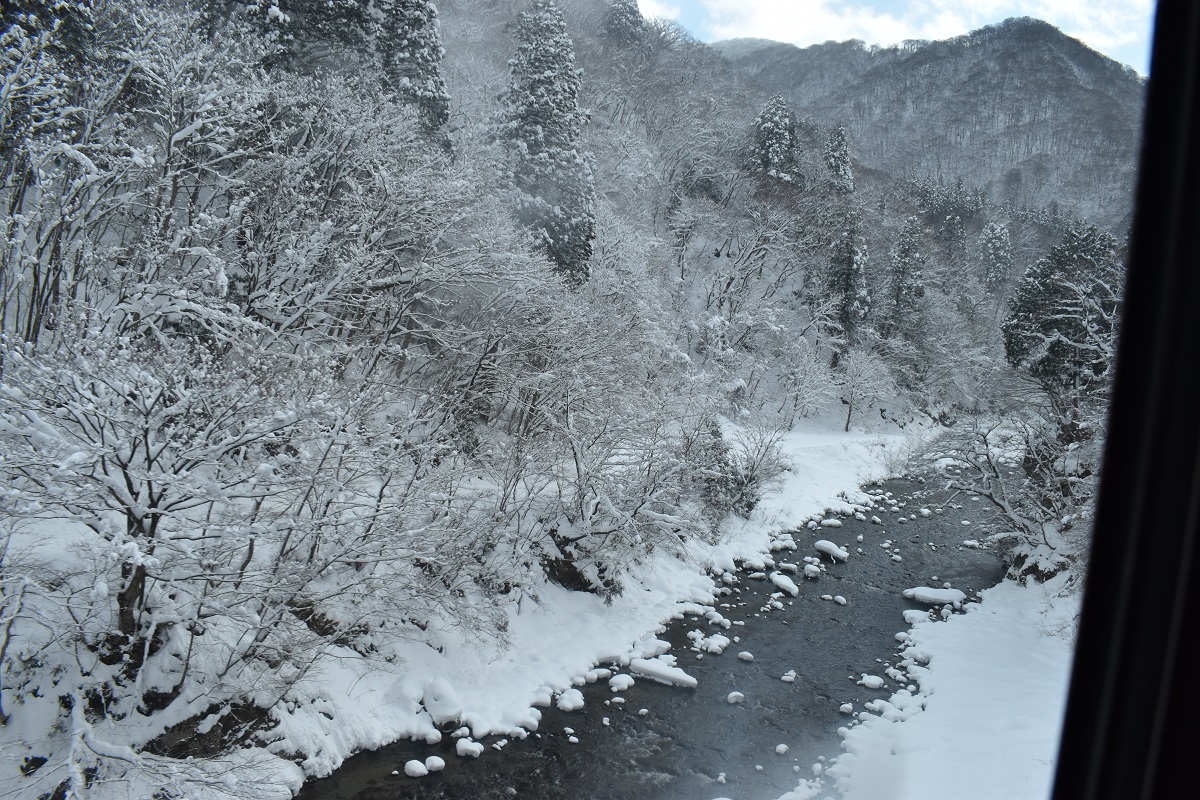The area was completely covered by pyroclastic flows from the great eruption of Mt. Aso 90,000 years ago, and the heat of the eruption transformed this into welded tuff. As it cooled further, its volume contracted, creating countless long vertical cracks, and subsequent erosion revealed columnar joints that can be seen everywhere. This is clearly visible in the waterfall.
Bat Falls
You can’t get close to the waterfall, it can only be seen from above, the road isn’t shown on car navigation systems, and the road to get there is so narrow that even a compact car would likely go off the rails, so the whole experience of getting there is filled with a sense of unease and a sense of being in a remote area. Suddenly, a parking space and a space to turn around appear. This is thanks to the local people who have maintained the area. Please check the entrance (“Park golf course” sign) from the main road (National Route 502) and the terrain from an aerial photograph beforehand. Cars cannot pass each other, but it seems that the road has been widened recently.

The waterfall is shaped like a bat with its wings spread, and in the Edo period, a wooden slide was built on part of it to allow ships to pass through. People in the past were amazing. The Kuju mountain range can be seen beautifully beyond the waterfall. It’s a place worth visiting.
Harajiri Falls is like Niagara Falls
The collapse of the tuff rocks over a width of 120m created a circular waterfall similar to Niagara Falls. The waterfall and the surrounding scenery are so beautiful that they make you think of a movie set or Disneyland. There is a suspension bridge that offers a panoramic view of the falls, but once you cross it the road is closed off beyond that point.

Chinda Falls
The collapse occurred over a width of 100m, creating a 20m-high step. It is famous for being depicted in a sumi-e painting by Sesshu during the Muromachi period. Unfortunately, the original painting was destroyed in the Great Kanto Earthquake, and only copies remain. Sesshu also painted Amanohashidate in Kyoto, so people really did travel a lot by foot in the past.


In modern times, a dam was built behind the falls to generate hydroelectric power, and the structure remains. At first, I thought it was just part of the falls. The welded tuff that forms the foundation of the waterfall is a geology that is weak against vertical shocks, and has repeatedly collapsed due to being unable to withstand large-scale flooding. As a result, the waterfall has gradually moved upstream over a long period of time. Kyushu Electric Power Co. reinforced the rocks around the base of the waterfall, and now it is in its current form. Even man-made structures like dams can sometimes help preserve the natural landscape. There was a lot of water and it was making a roaring noise.

































































































































































































